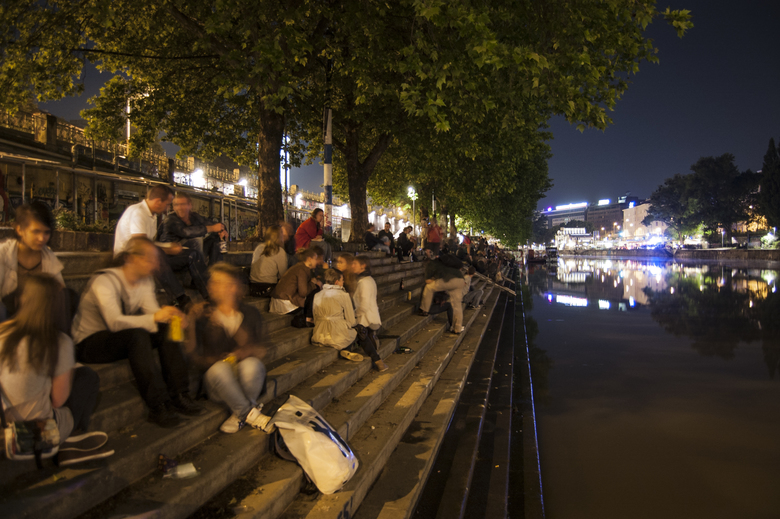Donaukanal Partitur
Wien, Austria
DONAUKANAL PARTITUR I Regulation- and Development-Guidelines for the Viennese Donaukanal
The project is a commission by the Vienna Municipal Department 19 – Architecture and Urban Design – based on the winning proposal of an invited competition.
It comprises two urban planning tools – one regulatory: the “Nicht-Bebauungsplan”, one developmental: a series of “Urban Scores” – specifically designed for that linear urban space of the Viennese Danube Canal along the water. These tools have become part of a more general discussion around new planning tools for public space within city planning. Donaukanal Partitur may also take a leading role for the development of free non-commercial space for leisure and recreation in other city centres.
The process-based approach includes earlier studies, a masterplan as well as all stake-holders throughout the process. It´s goal is not about creating any sort of “corporate identity” for this large site, but to create a consistent planning culture when it comes to public space, to set up rules transparent to the public; a sort of advocacy planning in favour of future, yet unknown ways of public interaction intervention or use of the place.
In order to stop the neo-liberal development of “privatizing” large pieces of the river bench, the basis for any further development is the “Non-Building Plan” Special care is being taken to “read” the existing qualities of the space in order to allow joyful arrival, open access to the water, enough free space to ensure safety even with increased use, open sight and vision.
As a diagrammatic tool the Partituren “read” the linear place in the manner of a score, analysing existing and planning new infrastructure for future development. The different “Partituren” involve built structures, landscape features, restoration plans, traffic design, mobility, logistics, electricity, water, cleaning and waste management. The goal is to strengthen public infrastructure towards an independency of commercialization of public space.
- Architects
- GABU Heindl Architecture
- Year
- 2014
- Client
- Stadt Wien – MA 19 – Architektur und Stadtgestaltung
- Team
- Planners Gabu Heindl, Susan Kraupp Team Karlis Berzins, Gaspar Hajdu, Markus Illetschko
Related Projects
Magazine
-
-
Building of the Week
A Loop for the Arts: The Xiao Feng Art Museum in Hangzhou
Eduard Kögel, ZAO / Zhang Ke Architecture Office | 15.12.2025 -










